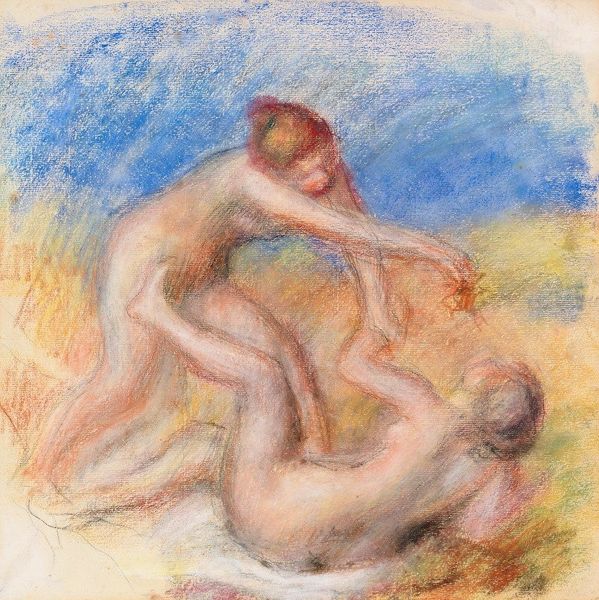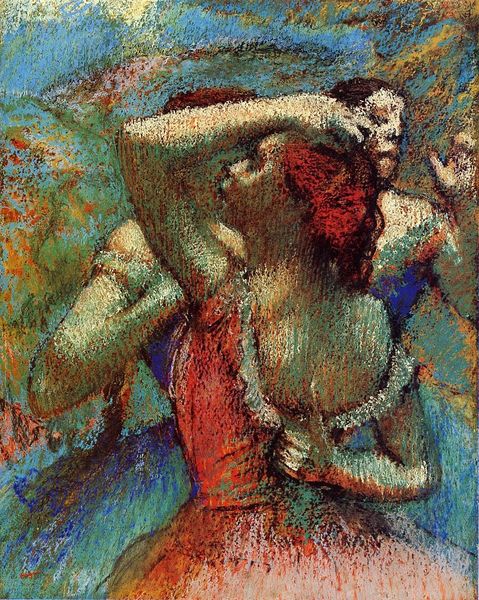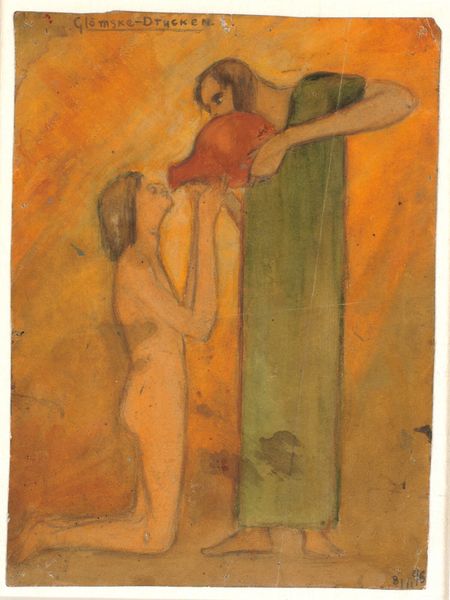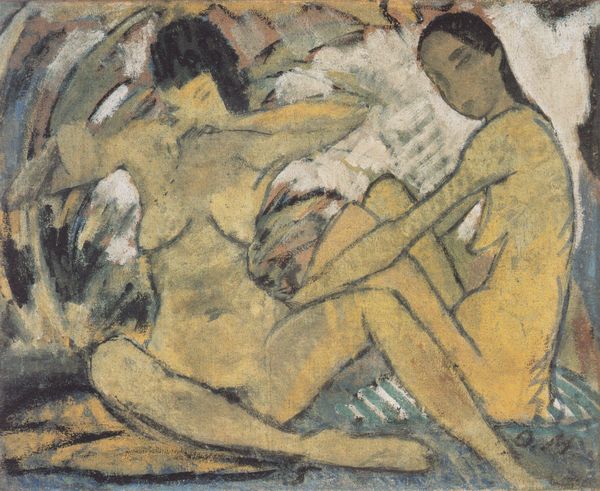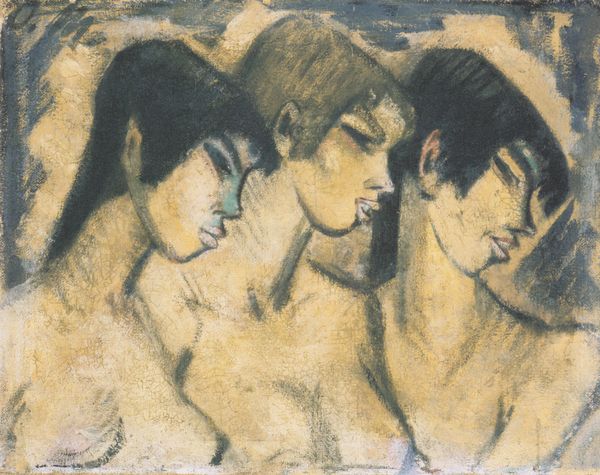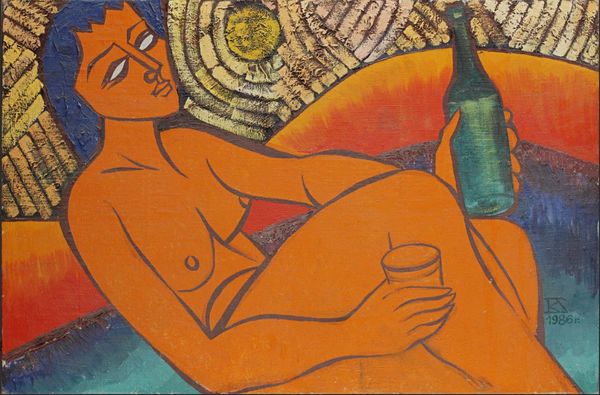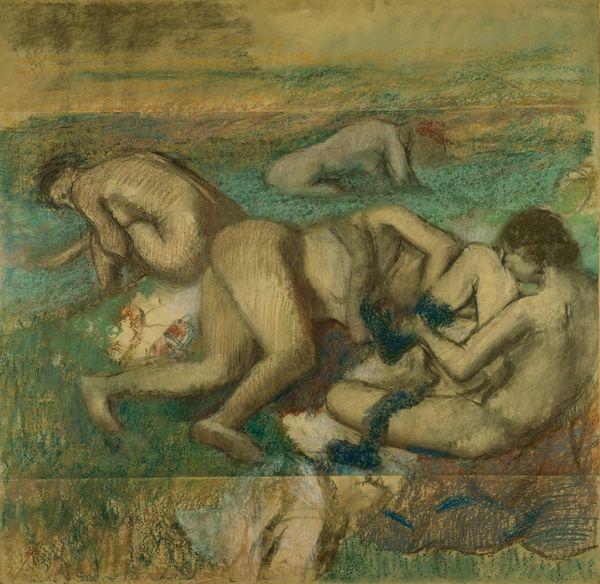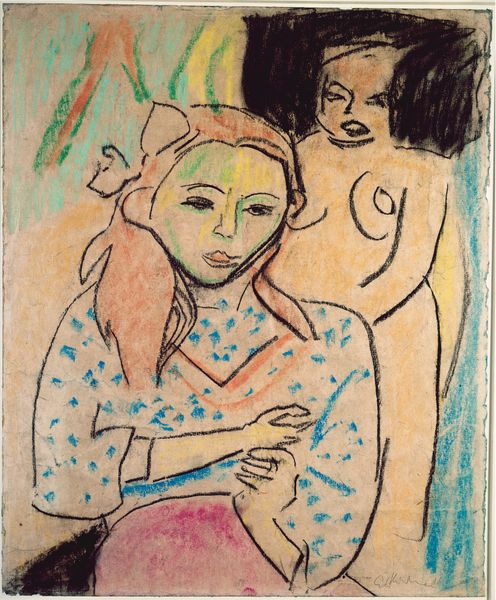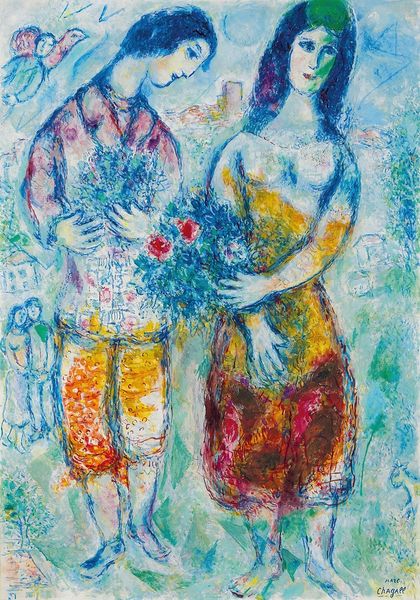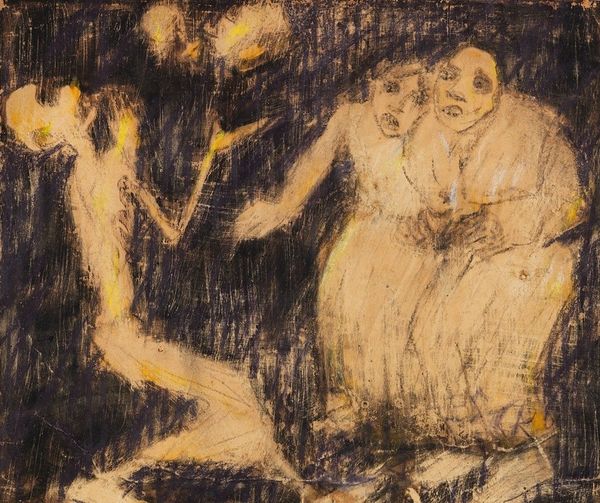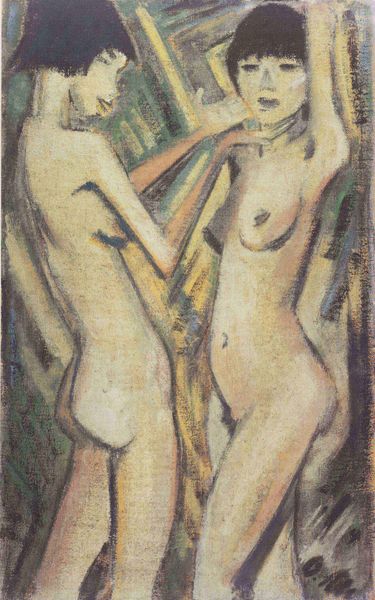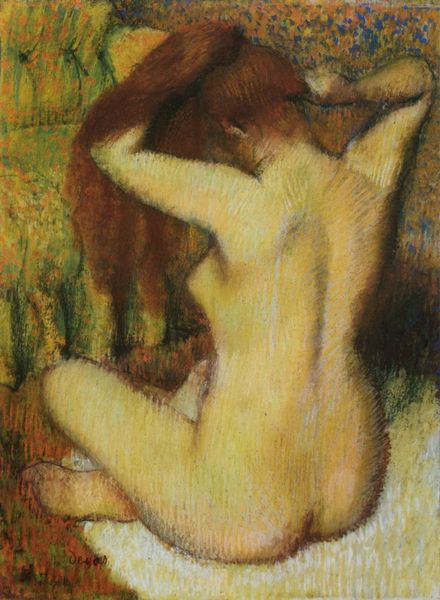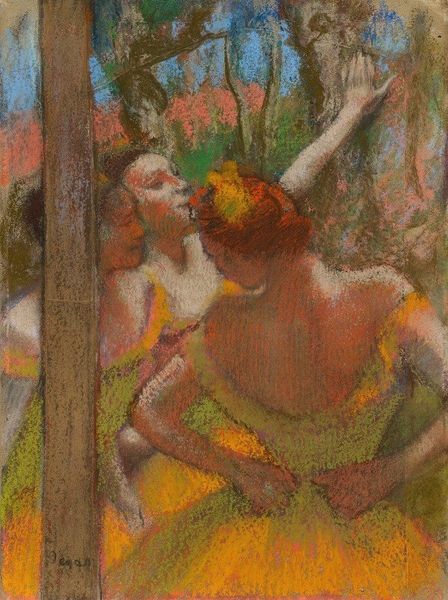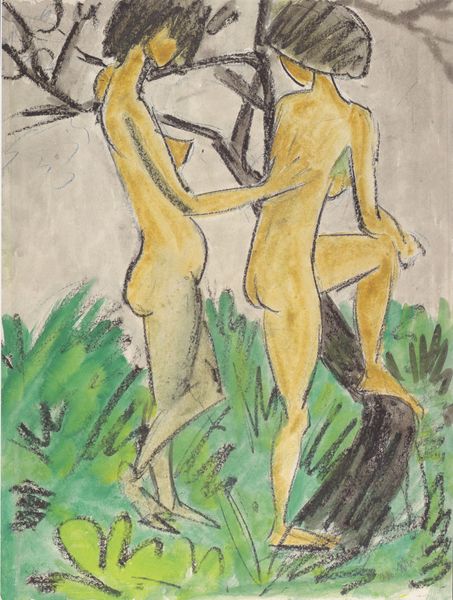
drawing, coloured-pencil, pastel
#
portrait
#
drawing
#
coloured-pencil
#
impressionism
#
figuration
#
possibly oil pastel
#
coloured pencil
#
genre-painting
#
pastel
Dimensions: 18 3/8 x 21 5/8 in. (46.7 x 54.9 cm)
Copyright: Public Domain
Curator: Edgar Degas created "Two Dancers, Half-length" sometime between 1854 and 1917, likely using pastel and colored pencil on paper. It’s currently held at the Metropolitan Museum of Art. Editor: It feels muted, almost dreamlike. The figures blend softly into the pastel ground, giving a sense of quiet intimacy, but also impermanence. Curator: The dancers depicted are recurring figures in Degas' work. These are the tutelage dancers—embodying specific feminine ideals while hinting at broader roles relegated to women across society. The act of dance itself, the repeated practice, the discipline and labor hidden behind seeming lightness is key. Editor: Absolutely. It's interesting how their backs are turned to us. It positions us as almost voyeuristic, observing this private moment of preparation or perhaps respite. There’s an undeniable tension between their vulnerability and the context of their profession, as perceived by society. What symbolism could be read into the adornment? Curator: Historically, Degas was capturing modernity and its fleeting moments. The symbols are found in this, capturing the world in motion rather than static depictions. We can read the use of these muted colors, combined with soft pastels, and delicate brushwork as capturing fleeting beauty. The colors are also related to rebirth, so a cyclical view to creation or a continuation of the art form. Editor: It also reveals, perhaps unintentionally, the limitations and pressures put upon female artists and dancers of that period, with this feeling of them becoming 'other'. The dance became their role, a job, versus free creative expression. The ethereal quality of the piece gives a certain beauty to the constraints. Curator: I see how the blending might represent some repression of individuality through constant practice and adherence to discipline. But I think we should look for a more specific story. I think it’s useful to consider dance as part of a cultural canon that emphasizes harmony between form and expression, a harmony born out of immense and difficult training. Editor: Right. It seems Degas leaves plenty to unpack within the artwork. The symbolism gives a complexity of meaning, far from one simple narrative. Curator: True. It's important to allow for varying interpretations, recognizing that our understanding of artworks evolves through time and place.
Comments
No comments
Be the first to comment and join the conversation on the ultimate creative platform.
